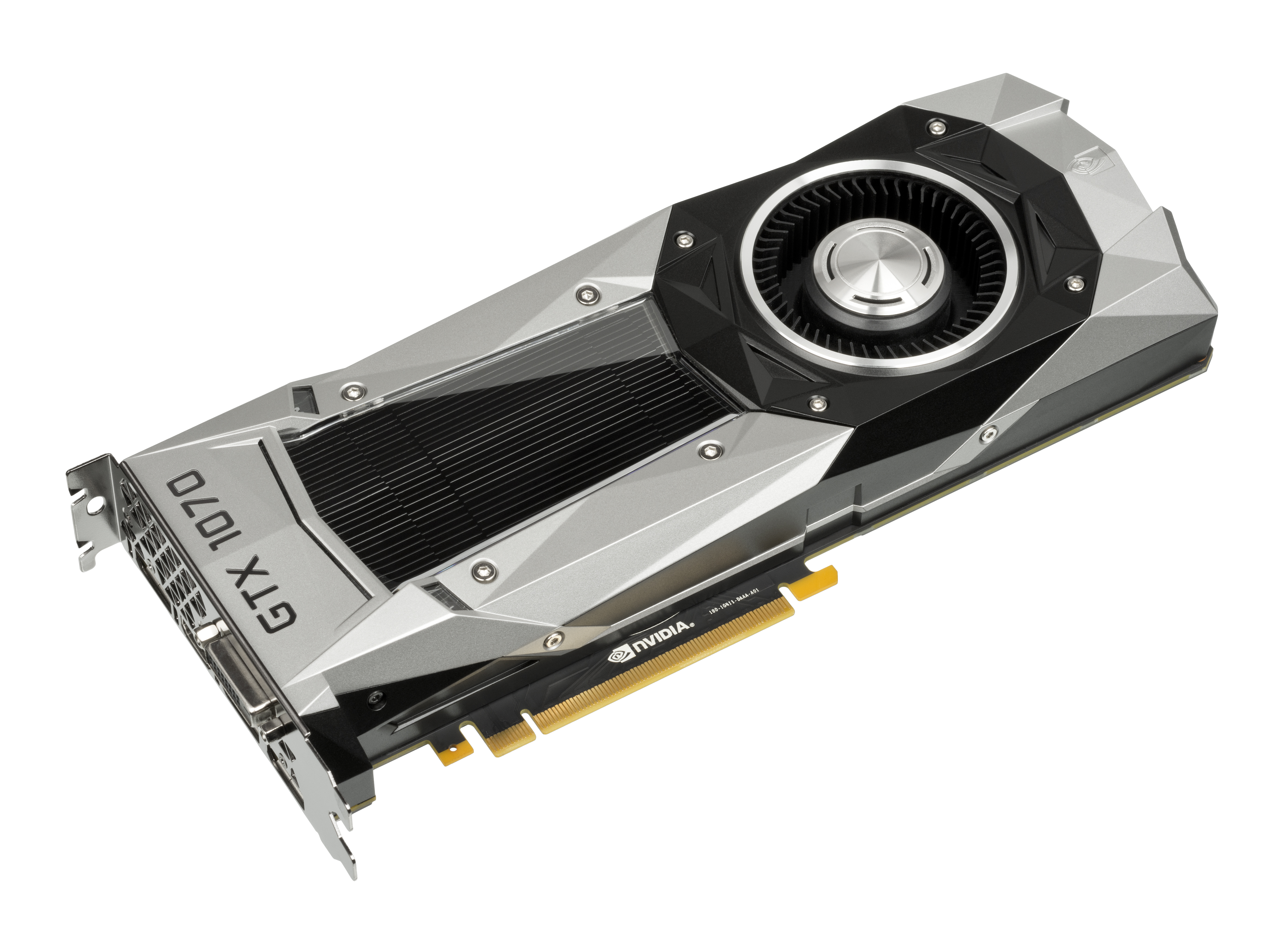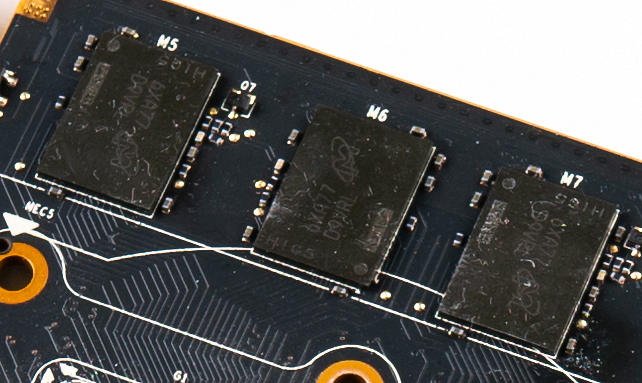|
Pascal (microarchitecture)
Pascal is the codename for a GPU microarchitecture developed by Nvidia, as the successor to the Maxwell architecture. The architecture was first introduced in April 2016 with the release of the Tesla P100 (GP100) on April 5, 2016, and is primarily used in the GeForce 10 series, starting with the GeForce GTX 1080 and GTX 1070 (both using the GP104 GPU), which were released on May 17, 2016 and June 10, 2016 respectively. Pascal was manufactured using TSMC's 16 nm FinFET process, and later Samsung's 14nm FinFET process. The architecture is named after the 17th century French mathematician and physicist, Blaise Pascal. In April 2019, Nvidia enabled a software implementation of DirectX Raytracing on Pascal-based cards starting with the GTX 1060 6 GB, and in the 16 series cards, a feature reserved to the Turing-based RTX series up to that point. Details In March 2014, Nvidia announced that the successor to Maxwell would be the Pascal microarchitecture; announced on May 6, 2 ... [...More Info...] [...Related Items...] OR: [Wikipedia] [Google] [Baidu] |
Nvidia NVENC
Nvidia NVENC (short for Nvidia Encoder) is a feature in Nvidia graphics cards that performs video encoding, offloading this compute-intensive task from the CPU to a dedicated part of the GPU. It was introduced with the Kepler-based GeForce 600 series in March 2012. The encoder is supported in many livestreaming and recording programs, such as vMix, Wirecast, Open Broadcaster Software (OBS) and Bandicam, as well as video editing apps, such as Adobe Premiere Pro or DaVinci Resolve. It also works with Share game capture, which is included in Nvidia's GeForce Experience software. Consumer targeted GeForce graphics cards officially support no more than 3 simultaneously encoding video streams, regardless of the count of the cards installed, but this restriction can be circumvented on Linux and Windows systems by applying an unofficial patch to the drivers. Doing so also unlocks ''NVIDIA Frame Buffer Capture (NVFBC)'', a fast desktop capture API that uses the capabilities of t ... [...More Info...] [...Related Items...] OR: [Wikipedia] [Google] [Baidu] |
High-bandwidth Digital Content Protection
High-bandwidth Digital Content Protection (HDCP) is a form of digital copy protection developed by Intel Corporation to prevent copying of digital audio and video content as it travels across connections. Types of connections include DisplayPort (DP), Digital Visual Interface (DVI), and High-Definition Multimedia Interface (HDMI), as well as less popular or now deprecated protocols like Gigabit Video Interface (GVIF) and Unified Display Interface (UDI). The system is meant to stop HDCP-encrypted content from being played on unauthorized devices or devices which have been modified to copy HDCP content. Before sending data, a transmitting device checks that the receiver is authorized to receive it. If so, the transmitter encrypts the data to prevent eavesdropping as it flows to the receiver. In order to make a device that plays HDCP-enabled content, the manufacturer must obtain a license for the patent from Intel subsidiary Digital Content Protection LLC, pay an annual fee, and sub ... [...More Info...] [...Related Items...] OR: [Wikipedia] [Google] [Baidu] |
Nvidia PureVideo
PureVideo is Nvidia's hardware SIP core that performs video decoding. PureVideo is integrated into some of the Nvidia GPUs, and it supports hardware decoding of multiple video codec standards: MPEG-2, VC-1, H.264, HEVC, and AV1. PureVideo occupies a considerable amount of a GPU's die area and should not be confused with Nvidia NVENC. In addition to video decoding on chip, PureVideo offers features such as edge enhancement, noise reduction, deinterlacing, dynamic contrast enhancement and color enhancement. Operating system support The PureVideo SIP core needs to be supported by the device driver, which provides one or more interfaces such as NVDEC, VDPAU, VAAPI or DXVA. One of these interfaces is then used by end-user software, for example VLC media player or GStreamer, to access the PureVideo hardware and make use of it. Nvidia's proprietary device driver is available for multiple operating systems and support for PureVideo has been added to it. Additionally, a fr ... [...More Info...] [...Related Items...] OR: [Wikipedia] [Google] [Baidu] |
HDMI
High-Definition Multimedia Interface (HDMI) is a proprietary audio/video interface for transmitting uncompressed video data and compressed or uncompressed digital audio data from an HDMI-compliant source device, such as a display controller, to a compatible computer monitor, video projector, digital television, or digital audio device. HDMI is a digital replacement for analog video standards. HDMI implements the EIA/CEA-861 standards, which define video formats and waveforms, transport of compressed and uncompressed LPCM audio, auxiliary data, and implementations of the VESA EDID. CEA-861 signals carried by HDMI are electrically compatible with the CEA-861 signals used by the Digital Visual Interface (DVI). No signal conversion is necessary, nor is there a loss of video quality when a DVI-to-HDMI adapter is used. The Consumer Electronics Control (CEC) capability allows HDMI devices to control each other when necessary and allows the user to operate multiple devices ... [...More Info...] [...Related Items...] OR: [Wikipedia] [Google] [Baidu] |
DisplayPort
DisplayPort (DP) is a digital display interface developed by a consortium of PC and chip manufacturers and standardized by the Video Electronics Standards Association (VESA). It is primarily used to connect a video source to a display device such as a computer monitor. It can also carry audio, USB, and other forms of data. DisplayPort was designed to replace VGA, FPD-Link, and Digital Visual Interface (DVI). It is backward compatible with other interfaces, such as HDMI and DVI, through the use of either active or passive adapters. It is the first display interface to rely on packetized data transmission, a form of digital communication found in technologies such as Ethernet, USB, and PCI Express. It permits the use of internal and external display connections. Unlike legacy standards that transmit a clock signal with each output, its protocol is based on small data packets known as ''micro packets'', which can embed the clock signal in the data stream, allowing higher resolutio ... [...More Info...] [...Related Items...] OR: [Wikipedia] [Google] [Baidu] |
GDDR5X
Graphics Double Data Rate 5 Synchronous Dynamic Random-Access Memory (GDDR5 SDRAM) is a type of synchronous graphics random-access memory (SGRAM) with a high bandwidth ("double data rate") interface designed for use in graphics cards, game consoles, and high-performance computing. It is a type of GDDR SDRAM (graphics DDR SDRAM). Overview Like its predecessor, GDDR4, GDDR5 is based on DDR3 SDRAM memory, which has double the data lines compared to DDR2 SDRAM. GDDR5 also uses 8-bit wide prefetch buffers similar to GDDR4 and DDR3 SDRAM. GDDR5 SGRAM conforms to the standards which were set out in the GDDR5 specification by the JEDEC. SGRAM is single-ported. However, it can open two memory pages at once, which simulates the dual-port nature of other VRAM technologies. It uses an 8N-prefetch architecture and DDR interface to achieve high performance operation and can be configured to operate in ×32 mode or ×16 (clamshell) mode which is detected during device initialization ... [...More Info...] [...Related Items...] OR: [Wikipedia] [Google] [Baidu] |
AnandTech
''AnandTech'' is an online computer hardware magazine owned by Future plc. It was founded in 1997 by then-14-year-old Anand Lal Shimpi, who served as CEO and editor-in-chief until August 30, 2014, with Ryan Smith replacing him as editor-in-chief. The web site is a source of hardware reviews for off-the-shelf components and exhaustive benchmarking, targeted towards computer building enthusiasts, but later expanded to cover mobile devices such as smartphones and tablets.For instance by: * * * * * Its investigative articles have been cited by other technology news sites like PC Magazine and The Inquirer. Some of their articles on mass-market products such as mobile phones are syndicated by CNNMoney. The large accompanying forum is recommended by some books for bargain hunting in the technology field. AnandTech was acquired by Purch on 17 December 2014. Purch was acquired by Future in 2018. History In its early stages, Matthew Witheiler served as co-owner and Senior Hard ... [...More Info...] [...Related Items...] OR: [Wikipedia] [Google] [Baidu] |
Half-precision Floating-point Format
In computing, half precision (sometimes called FP16) is a binary floating-point computer number format that occupies 16 bits (two bytes in modern computers) in computer memory. It is intended for storage of floating-point values in applications where higher precision is not essential, in particular image processing and neural networks. Almost all modern uses follow the IEEE 754-2008 standard, where the 16-bit base-2 format is referred to as binary16, and the exponent uses 5 bits. This can express values in the range ±65,504, with the minimum value above 1 being 1 + 1/1024. Depending on the computer, half-precision can be over an order of magnitude faster than double precision, e.g. 550 PFLOPS for half-precision vs 37 PFLOPS for double precision on one cloud provider. History Several earlier 16-bit floating point formats have existed including that of Hitachi's HD61810 DSP of 1982, Scott's WIF and the 3dfx Voodoo Graphics processor. ILM was searching for an image ... [...More Info...] [...Related Items...] OR: [Wikipedia] [Google] [Baidu] |
NVLink
NVLink is a wire-based serial multi-lane near-range communications link developed by Nvidia. Unlike PCI Express, a device can consist of multiple NVLinks, and devices use mesh networking to communicate instead of a central hub. The protocol was first announced in March 2014 and uses a proprietary high-speed signaling interconnect (NVHS). Principle NVLink is a wire-based communications protocol for near-range semiconductor communications developed by Nvidia that can be used for data and control code transfers in processor systems between CPUs and GPUs and solely between GPUs. NVLink specifies a point-to-point connection with data rates of 20, 25 and 50 Gbit/s (v1.0/v2.0/v3.0 resp.) per differential pair. Eight differential pairs form a "sub-link" and two "sub-links", one for each direction, form a "link". The total data rate for a sub-link is 25 GByte/s and the total data rate for a link is 50 GByte/s. Each V100 GPU supports up to six links. Thus, each GPU is capable of suppor ... [...More Info...] [...Related Items...] OR: [Wikipedia] [Google] [Baidu] |
High Bandwidth Memory
High Bandwidth Memory (HBM) is a high-speed computer memory interface for 3D-stacked synchronous dynamic random-access memory (SDRAM) initially from Samsung, AMD and SK Hynix. It is used in conjunction with high-performance graphics accelerators, network devices, high-performance datacenter AI ASICs and FPGAs and in some supercomputers (such as the NEC SX-Aurora TSUBASA and Fujitsu A64FX). The first HBM memory chip was produced by SK Hynix in 2013, and the first devices to use HBM were the AMD Fiji GPUs in 2015. High Bandwidth Memory has been adopted by JEDEC as an industry standard in October 2013.High Bandwidth Memory (HBM) DRAM (JESD235) JEDEC, October 2013 The second generation, HBM2, was accepted by JEDEC in January 2016. Technology ...
|

